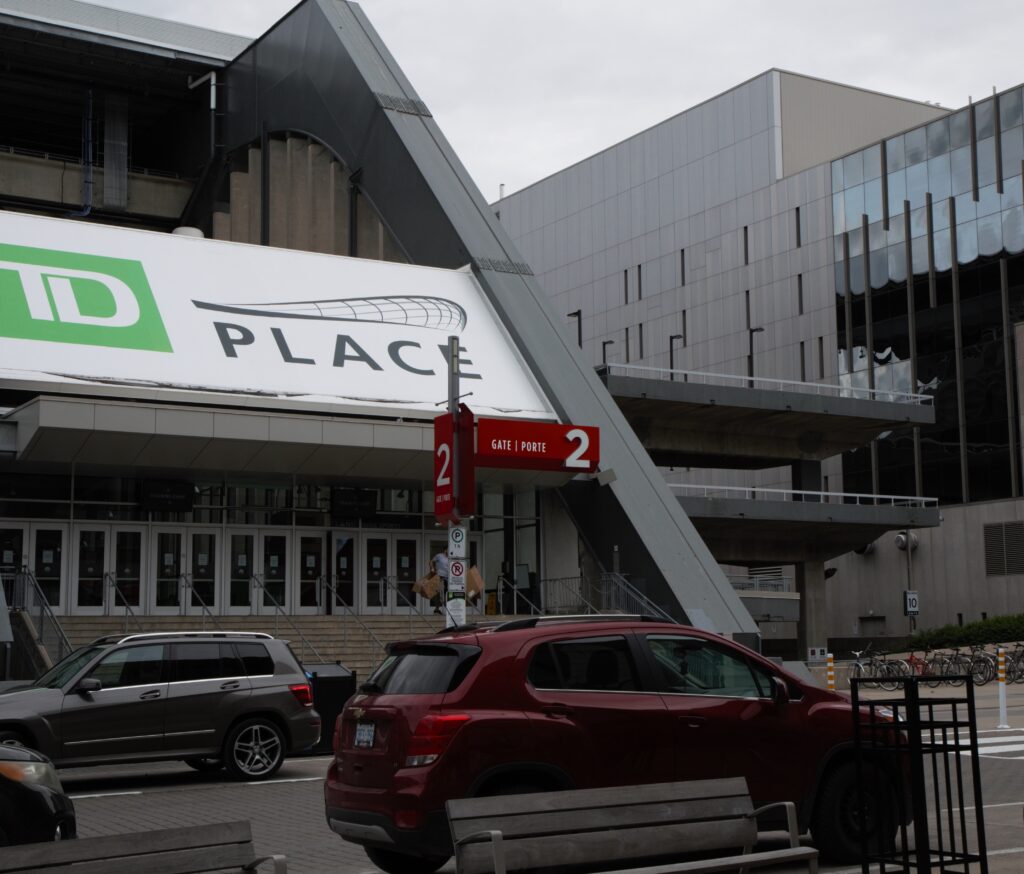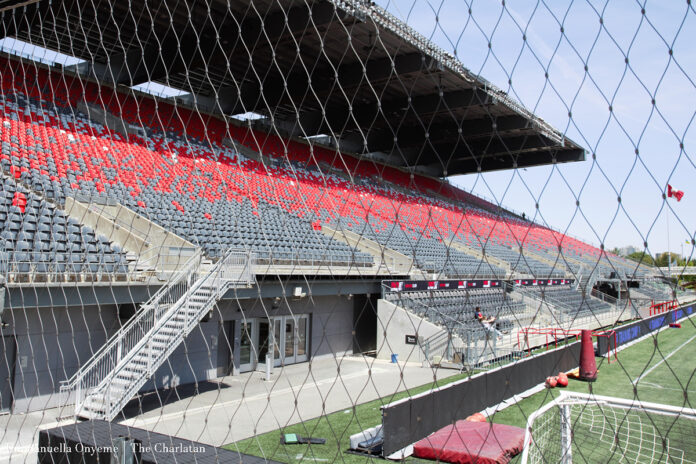Ottawa city council voted 17-7 on Wednesday to continue with Lansdowne 2.0—a proposal from the Ottawa Sports and Entertainment Group (OSEG) to revitalize Lansdowne Park.
Controversy surrounds the OSEG proposal as financial constraints, lack of affordable housing and loss of green space worry many Ottawa locals ahead of municipal elections in October.
The vote grants the city of Ottawa the authority to issue $332 million in debt for the project, but that will only happen after the redevelopment, according to Deputy City Treasurer (Corporate Finance) Isabelle Jasmin. However, $8 million is at risk should the next city council revoke the decision to proceed with Lansdowne 2.0.
In 2012, the City of Ottawa and OSEG rebuilt Lansdowne Park in hopes of revitalizing the area. The reconstruction included a new stadium and arena, which became the home playing grounds of four Ottawa sports teams. It opened in 2014.
“The new and improved Lansdowne has been a big hit with residents throughout the city,” Ottawa Mayor Jim Watson said in Wednesday’s city council meeting.
However, it has also faced it’s share of criticism and has caused controversy among locals.
The recent OSEG proposal plans to tear down the north side of TD Place Stadium and TD Place Arena below it. Its redevelopment will bring a new north side building and a new 5,500 seat arena beside the building rather than below it. The project also plans for three new apartment buildings behind the north side that will include rental units, owned residential units and affordable housing.
The event centre is expected to create more than 4,000 jobs, according to the redevelopment proposal.

The report also included a record of Lansdowne’s impact since its creation in 2017 and reported that the OSEG Foundation has contributed more than $6 million in programming and community investments.
Capital Ward City Councillor Shawn Menard has been outspoken about the proposal. While he’s not fully against Lansdowne 2.0, he has questions and wants more time for public consultation on the proposal.
“Amongst some worthwhile ideas are a lot of questions and concerns,” Menard said in an email statement to the Charlatan.
The report was released on April 27 and approved on May 6. Menard criticized the short review period.
Alta Vista City Councillor Jean Cloutier countered Menards critiques.
”There is plenty of opportunity for consultations—that is partially what this report sets up,” Cloutier wrote in an email to the Charlatan.
Stephen Willis, general manager (planning, real estate and economic development) of Ottawa city council, said the next phase of Lansdowne 2.0 allows for better consultation. Funds provided by the city will go towards research to obtain answers to questions from residents and councillors alike.
“We are making [consultation] part of the next phase,” Willis said.
River Ward councillor, Riley Brockington, said he finds himself and city council in a dilemma. While he supports aspects of the proposal, he said failing to fully consult residents erodes confidence in the report.
“I’ve heard loud and clear from my residents,” Brockington said at Wednesday’s meeting. “They expected the opportunity for public engagement before [our discussions] today.”
Menard and Rideau-Rockcliffe councillor Rawlson King put forward a procedural motion that would halt any amendments to the proposal for six months. During Wednesday’s meeting, Menard said that this motion will fulfill what council promised in July 2021—consult with the public and report it back to the council.
Mayor Jim Watson urged councillors to vote against the motion so that Lansdowne 2.0 can advance into the next stage. The motion lost 15-7.
Although public consultation is a major issue for many, other councillors also took issue with the housing portion of the proposal.
In a blog post on his website on May 18, Menard argued that the city will lose millions in property taxes and 58,000 square feet of public green space with the new TD Place arena.
In his email, Menard added the proposed ‘affordable housing’ units may not be affordable for the average renter.
“Why are the 10% of so-called ‘affordable housing’ units likely to be above market rent for Ottawa if we are selling off public air rights?” Menard wrote.
Somerset councillor Catherine Mckenney issued a motion surrounding the affordable housing targets. Their motion aimed to rectify the areas of the proposal that did not define affordable-housing with the council-approved definitions of market-affordable and core-affordable. It would see an increase from 10 to 20 per cent (an estimated 240 units) of mixed-income housing at an affordable level. Council denied the motion.
Rideau-Vanier councillor Mathieu Fleury issued a motion that would direct council staff to work with developers to ensure that these affordable units be offered to households on the social housing or below the market rent wait list.
The Fleury motion, along with a Fleury-Menard motion that added a level of ensurity to support the Ottawa Redblacks and 67’s during the development of Lansdowne 2.0, were both carried.
Featured Image By Emmanuella Onyeme






